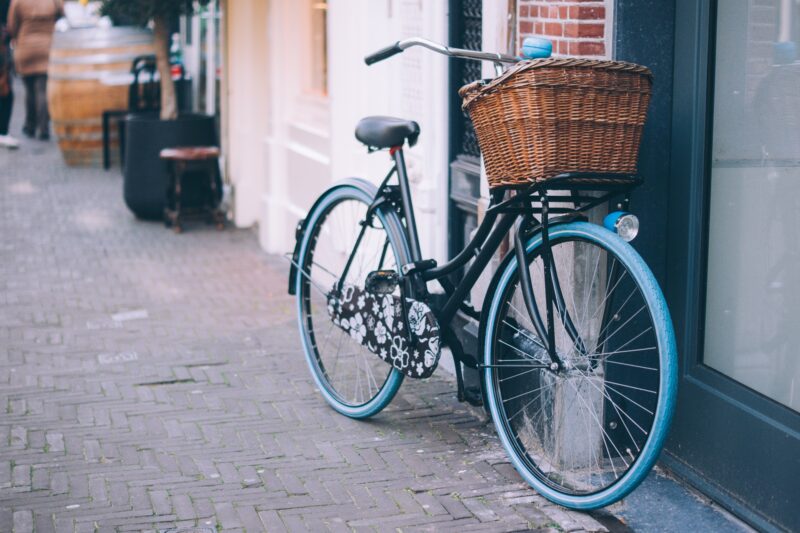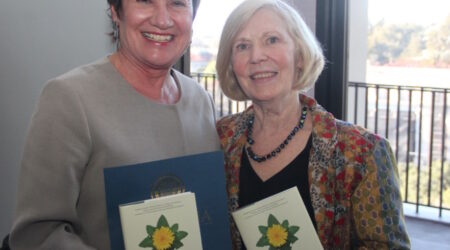 “Bikes are great…but they’re not infallible,” says Dr. John G. Stehlin, a Lecturer who earned his Ph.D. from the UC Berkeley Department of Geography in 2015.
“Bikes are great…but they’re not infallible,” says Dr. John G. Stehlin, a Lecturer who earned his Ph.D. from the UC Berkeley Department of Geography in 2015.
It’s an unexpected statement from someone whose life and work revolves around urban biking. After graduating from Vassar College in 2004, Stehlin started working at a Philadelphia bicycle shop. He got the job in part thanks to his Spanish-speaking ability, an important asset in a predominantly Latino neighborhood. At work, he met many recent immigrants and low-income workers who were using their bicycles for practical purposes, like delivering food or commuting home. He quickly found a disconnect between the bikers he saw every day and the popular image of the urban bicyclist—someone like Stehlin himself, who says people might describe him at first glance as “‘one of those white hipsters on bikes.’”
That disjuncture made him consider what people think of when considering who qualifies as serious cyclists. This judgment is often informed consciously or subconsciously by race and class, and it literally determines who counts. “There are people who don’t ride to work—they don’t have a job,” Stehlin says. “They ride to social services, but because they do not ride to work, they are not recorded by the U.S. census as someone who rides a bike, and so they become invisible in that way.”
Stehlin says these bikers often have less political power than cyclists from other socioeconomic strata, such as “young professionals who ride to work and are organized in bicycle coalitions.” And because urban planners don’t see these “invisible cyclists,” they don’t design cities for them.
Thinking about this issue led Stehlin to immerse himself in further research, as the bicycle is a lens, providing new ways to view and understand changing urban conditions. “I couldn’t avoid this topic,” Stehlin says. “It ties into a much broader set of things. I often frame it as this puzzle. Bicycling is cheap; it’s way cheaper than a car. But living where it’s easy, relatively safe, intuitive, and practical to ride a bike—that’s getting more expensive.”
Dissecting that puzzle led to his dissertation at Berkeley, “Business Cycles: Race, Gentrification, and the Making of Bicycle Space in the San Francisco Bay Area,” which he is now working to turn into a book. He has meanwhile continued his research on gentrification with a recent article on urban gardening and cycling and another on urban public space, “The Post-Industrial Shop Floor: Emerging Forms of Gentrification in San Francisco’s Innovation Economy.”
Bicycling is cheap; it’s way cheaper than a car. But living where it’s easy, relatively safe, intuitive, and practical to ride a bike—that’s getting more expensive.
Gentrification is a hot topic in the Bay Area, but many conversations focus on neighborhoods’ shifting racial demographics. Stehlin engages with the issue on additional fronts, including gender. He points to the 1990s development of San Francisco’s South of Market (SoMa) neighborhood and what he terms its “class-inflected logic of ‘security’.” Stehlin points out that, prior to its recent development, SoMa had been populated by retired dock-workers (largely male). Part of the logic that emerged to justify SoMa’s development was, as he says, “safety with a gendered inflection—’we need to make this [neighborhood] safe for women.’”
Even bike culture can be gendered. Stehlin points out that more men than women bike to work, and that even facetious terms for cyclists, like the “MAMIL” (middle-aged man in Lycra), are gendered. When American women ride bikes, they may be scrutinized for perceived sins like prioritizing aesthetics over safety (for example, a New York Observer article, “The Spokes-Models,” dismissed upper-crust New York City female bicyclists as “beautiful Godzillas” careening about with no regard for road rules).
Associating bicycles with white hipsters and sundress-wearing “spokes-models”—young professionals increasingly seen as the faces of urban gentrification—is a departure from much of urban bicycling history. “People have been riding bikes in cities for a very long time,” Stehlin says, “because it made the most sense to them. It was cheap and flexible.” These people ride, first and foremost, out of need. The problem, Stehlin says, arises “if bicycles make cities attractive to the ‘creative class.’”
In “The Post-Industrial Shop Floor,” Stehlin writes that, “for writers like Richard Florida, for instance, urban spaces are meccas for creative people, the drivers of our economic future. These footloose ‘creatives’, the story goes, are constantly on the move, always innovating and producing value as long as there are spaces and infrastructures that encourage them to congregate and interact.” When these individuals swarm cities like San Francisco for the economic opportunities that await them, they may catalyze improvements to infrastructure (e.g., SF becoming more bike-friendly) while also displacing the people whom those improvements should potentially serve the most. These people, Stehlin worries, “might end up in places that are not as safe to ride bikes, where they can’t ride bikes.”
 There are other narratives for what a typical bicyclist looks like, Stehlin notes, pointing to the example of the Scraper Bike Team, a predominantly African-American and Latino youth bike team that started with a YouTube video ten years ago. In the video, Stehlin explains, team co-founder Tyrone Stevenson (also known as Baybe Champ) talks about “scraper bikes,” which are modified bikes in the fashion of scraper cars, “an Oakland vernacular automotive tradition.” The team has expanded since that YouTube video, building the Scraper Bike Shed as a designated site where young people can come to fix their bikes. The bike team is intended to provide motivations for school performance and a positive alternative to gang participation in underserved Oakland neighborhoods. The team has gained visibility in the community and recognition from media outlets like KQED.
There are other narratives for what a typical bicyclist looks like, Stehlin notes, pointing to the example of the Scraper Bike Team, a predominantly African-American and Latino youth bike team that started with a YouTube video ten years ago. In the video, Stehlin explains, team co-founder Tyrone Stevenson (also known as Baybe Champ) talks about “scraper bikes,” which are modified bikes in the fashion of scraper cars, “an Oakland vernacular automotive tradition.” The team has expanded since that YouTube video, building the Scraper Bike Shed as a designated site where young people can come to fix their bikes. The bike team is intended to provide motivations for school performance and a positive alternative to gang participation in underserved Oakland neighborhoods. The team has gained visibility in the community and recognition from media outlets like KQED.
Still, these young bikers still face challenges, as the Scraper Bike Team’s current president, Burnette Jr., described in Oakland Voices: “There’s no access to biking in the flatlands of East Oakland,” Burnette Jr. said. “I dream of better bike lanes and networks with no potholes so kids can ride their bikes to school and wherever else they want to go.”
Stehlin considers how equity is not only interlinked with social justice, but with climate change. “A lot of people are saying there’s a kind of ‘green premium’ on certain kinds of spaces that make them unaffordable,” Stehlin says. “That’s not necessarily something that is going to enact the wide-ranging changes that we want to see, and need to see, in the context of climate change. When I talk to the bicycle advocates, I tell them that affordable housing might be our best bet for bicycle advocacy.”
Stehlin says that bicycle advocacy is “wedded to a business-friendly narrative” that is “hard to walk away from that, especially when you have consultants telling you that that’s what you need to do to attract the tech workers.” But he sees hope in the fact that more people are discussing “whether becoming inequitably sustainable is actually a poor way of doing sustainability,” and he expresses the hope that there will be “more awareness from people who are really excited about bicycle issues—and about the way that they tie into much larger processes.”
“It’s exciting that people are interested in how you move in cities, and what it means,” Stehlin says. “I’m not excited about it being thought of in purely instrumental purposes—like ‘let’s increase accessibility in these particular places so that developers will build there.’ Because I think that what is problematic about capitalist society in its current moment is not necessarily going to be solved by the market.”
Is there an opening here for solutions from social justice-minded students and bicycle advocates? Possibly, Stehlin says, but only if “we take seriously the kind of structural issues that we’re up against.”
Top photo credit: Unsplash, Creative Commons license 0 Public Domain via Pixabay.
Inserted Photo credit: “Scraper Bike Team,” George Kelly, Creative Commons license 2.0 via Flickr.



